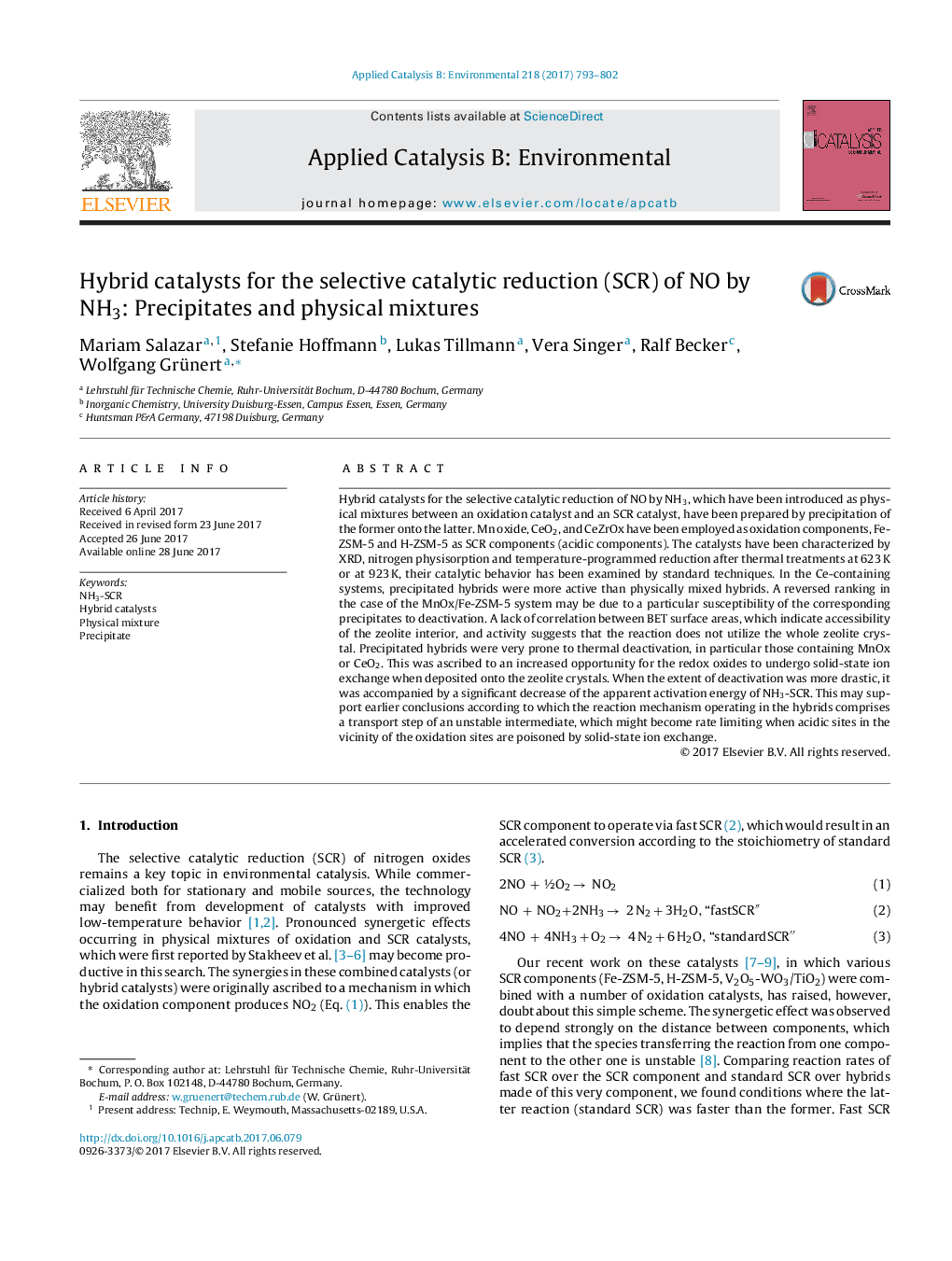| کد مقاله | کد نشریه | سال انتشار | مقاله انگلیسی | نسخه تمام متن |
|---|---|---|---|---|
| 6453851 | 1418802 | 2017 | 10 صفحه PDF | دانلود رایگان |

- Hybrid SCR catalysts by mixing components compared with hybrids by precipitation.
- Precipitated hybrids more active, but more prone to deactivation.
- Hybrids with MnOx-based oxidation component deactivate stronger than Ce-containing hybrids.
- Low activation energy of SCR over deactivated hybrids suggests transport step in mechanism.
Hybrid catalysts for the selective catalytic reduction of NO by NH3, which have been introduced as physical mixtures between an oxidation catalyst and an SCR catalyst, have been prepared by precipitation of the former onto the latter. Mn oxide, CeO2, and CeZrOx have been employed as oxidation components, Fe-ZSM-5 and H-ZSM-5 as SCR components (acidic components). The catalysts have been characterized by XRD, nitrogen physisorption and temperature-programmed reduction after thermal treatments at 623Â K or at 923Â K, their catalytic behavior has been examined by standard techniques. In the Ce-containing systems, precipitated hybrids were more active than physically mixed hybrids. A reversed ranking in the case of the MnOx/Fe-ZSM-5 system may be due to a particular susceptibility of the corresponding precipitates to deactivation. A lack of correlation between BET surface areas, which indicate accessibility of the zeolite interior, and activity suggests that the reaction does not utilize the whole zeolite crystal. Precipitated hybrids were very prone to thermal deactivation, in particular those containing MnOx or CeO2. This was ascribed to an increased opportunity for the redox oxides to undergo solid-state ion exchange when deposited onto the zeolite crystals. When the extent of deactivation was more drastic, it was accompanied by a significant decrease of the apparent activation energy of NH3-SCR. This may support earlier conclusions according to which the reaction mechanism operating in the hybrids comprises a transport step of an unstable intermediate, which might become rate limiting when acidic sites in the vicinity of the oxidation sites are poisoned by solid-state ion exchange.
143
Journal: Applied Catalysis B: Environmental - Volume 218, 5 December 2017, Pages 793-802